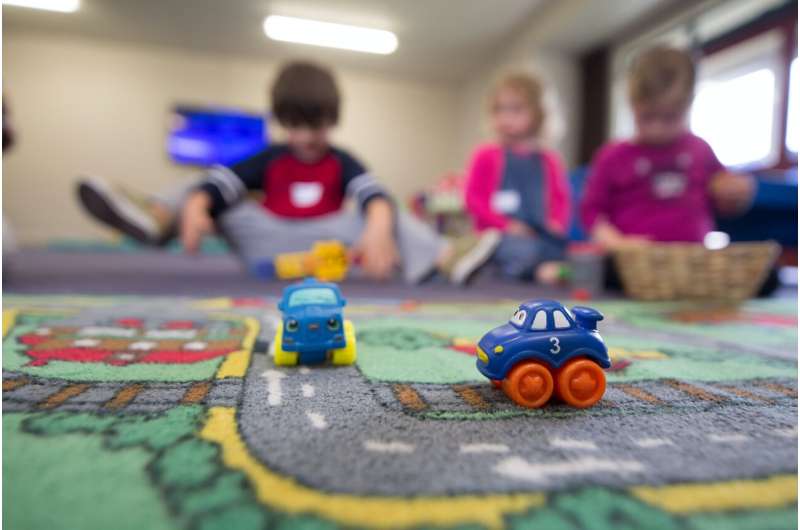
Molds, and especially yeasts, were far more common in indoor daycare centers than outside of them, according to a new study. Factors such as certain building features and the number of children in a daycare influenced the species of fungi found within, suggesting that many of the molds and yeasts probably have indoor sources.
“This information is important to understand the alarming increase in chronic diseases like asthma and allergies in children,” said first author Eva Lena Estensmo, Ph.D., University of Oslo, Norway. The research is published in Applied and Environmental Microbiology, a journal of the American Society for Microbiology.
The study was motivated by the rise in chronic allergies and asthma, combined with the general lack of knowledge about the indoor mycobiome, said Dr. Estensmo. “Fungal growth can lead to poor indoor air quality, and some fungi are associated with allergic reactions and respiratory symptoms that may lead to chronic respiratory diseases.”
In the study, the researchers investigated the indoor and immediate outdoor mycobiomes of 125 daycare centers in Norway, sampling dust swabbed from the insides and outsides of door frames and correlating the findings with different variables, such as the number and ages of children in each daycare, the building type (single building, apartment, etc.), building materials (bricks, wood, etc.), ventilation type, presence of pests, history of mold damage and year of construction.
The study also accounted for environmental data, including temperature and moisture levels inside and out, distance from the coast, and longitude and latitude of the daycare centers.
“Especially the high diversity of yeasts came as a surprise,” said Dr. Estensmo. “Many might be associated with the human body. We don’t fully know whether the yeasts are especially associated with children, but we have some indications—work in progress—that far more yeasts are present in daycares than in other indoor environments.
“In addition, the daycare environment with a lot of activity and high density of people is an interesting environment to study in relation to human influence on the indoor mycobiome,” said Dr. Estensmo. She said it was well established that the indoor microbiome related to bacteria is influenced by humans, but that much less had been known about human influence on the mycobiome.
“Since young children often bring in organic materials such as soil and litter from nature, daycare centers may accumulate extra organic substrates promoting fungal growth, compared to other indoor environments,” the authors wrote. Previously, it has been shown that the concentration of fungi in daycare centers is higher than that in homes.
Source: Read Full Article
